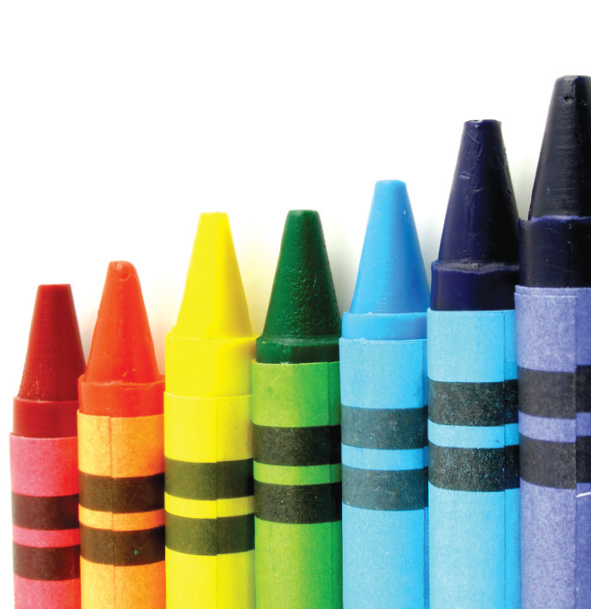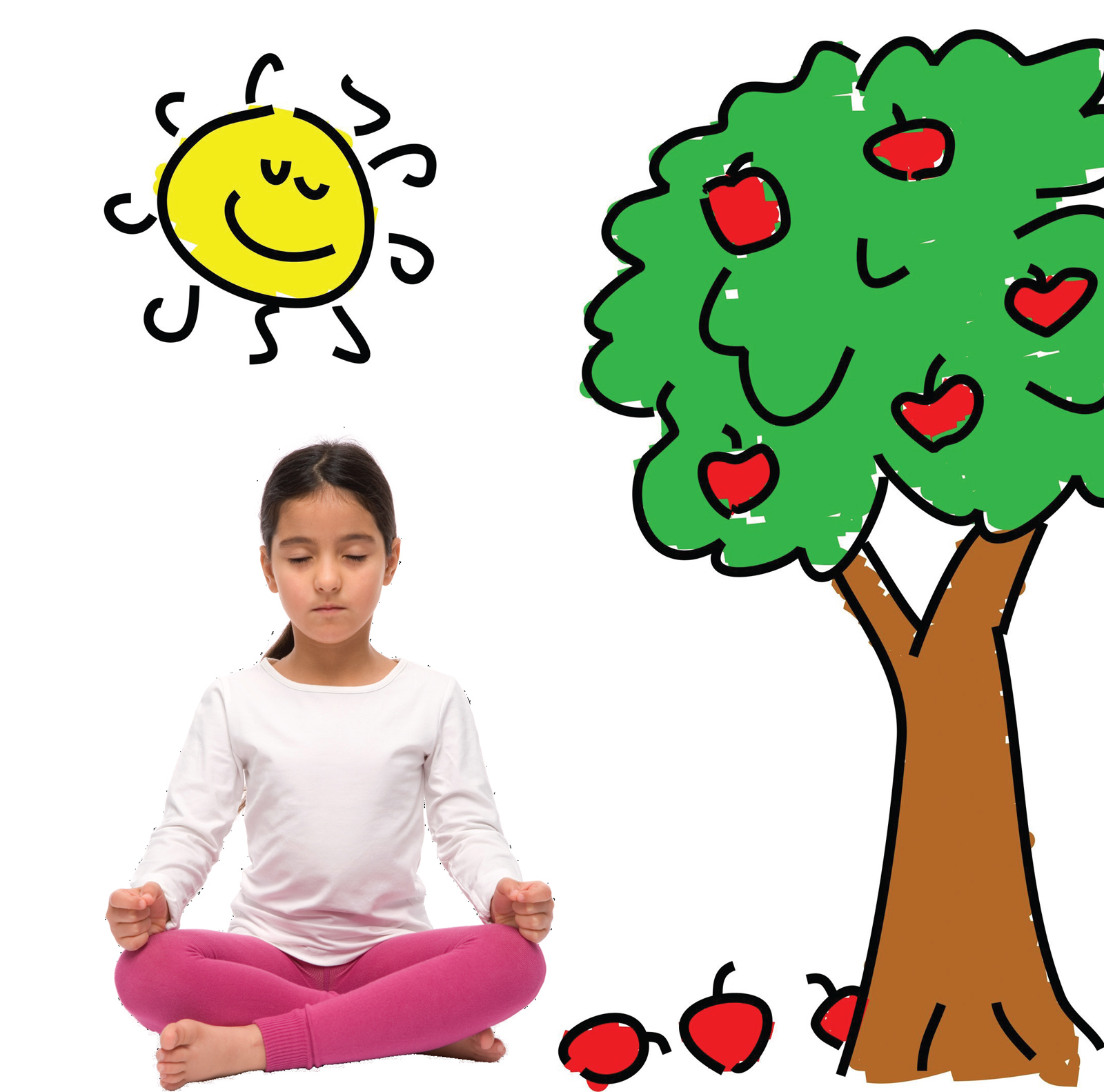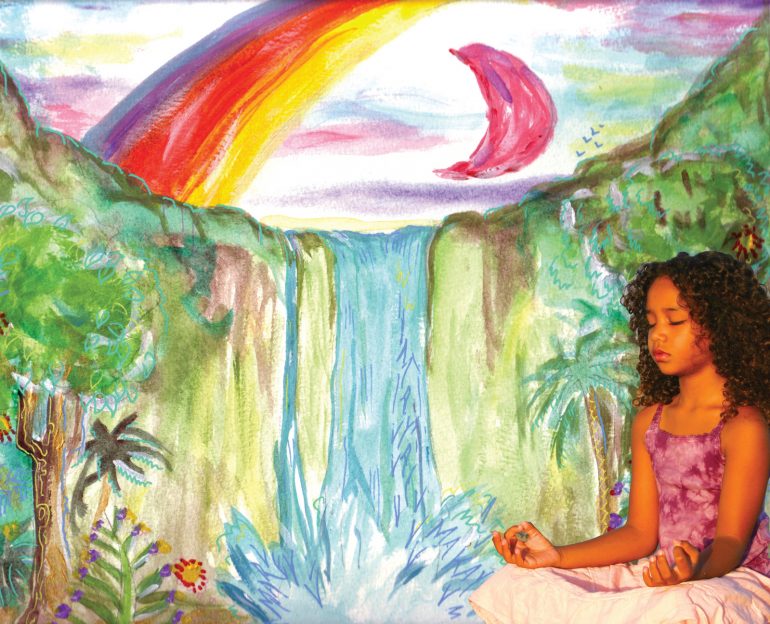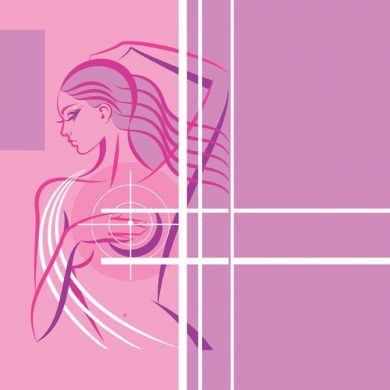Meditation for children is becoming increasingly popular as parents, schools and health care professionals continue to search for holistic ways to balance and focus young minds in school and everyday life. With many parents at a loss as their children are being diagnosed with ADD, ADHD and a long list of other diagnoses given by teachers and medical professionals, we are hard pressed to find better ways to handle this worldwide epidemic. Meditation seems to be the answer that many are seeking. The benefits of meditation far exceed the obvious results of focus and concentration. Meditation allows for a glimpse into our true state – a state of bliss. Here, we experience ourselves as creators, not as victims of our circumstances. Once you have experienced meditation, you are never quite the same.
Meditation, if taught at a young age, can greatly enhance a child’s life. Through meditation, you become firmly grounded in the self, allowing for greater confidence and a true sense of self to shine through. Most children face a great amount of stress as they are called to perform physically, academically, and socially in school, not to mention what goes on outside of school with parents and society asking them to behave and achieve a certain level in order to be “successful.” All this conditioning without a sense of self will make any child stressed and feel overwhelmed in this world.
Young children naturally enter a state of meditation as they play with their toys, become engrossed in their music, dance, or any other activity that allows them to be fully present. As they get older, though, their focus shifts from the present moment to the past and future as the mental chatter takes over because of conditioning, expectations, and goals that they set for themselves. These factors take them out of the moment, never allowing them to be in a state of meditation again unless they consciously make the effort.
If we can teach a child early on to continue the act of mindfulness in whatever they do, then they will be ahead of the game. Awareness is the first and last step to a true sense of self. When we are aware, we open ourselves to all possibilities that life has to offer. As the universal energy flows through us, we become filled with inspiration and energy. This state allows for happiness and success in whatever field we choose as we will be in touch with our true calling (dharma) and act from a state of wholeness rather than a place of expectation and fear.
Meditation techniques for children

Guided visualization
Children have a tremendously powerful imagination, much greater than adults. To help them focus and tap this inner resource, we can give them opportunities to practice guided meditation. If a child is five or younger, have him or her lie down with eyes closed. If they are older than five, then they can sit comfortably on a chair or cross-legged on the ground.
1) Ask them to close their eyes, and begin by taking deep breaths, relaxing the body on the exhale. Always bring the attention to the breath when starting meditation as it plants you firmly in the here and now.
“Now, imagine yourself sitting in a spaceship, ready to take off. With the eyes still closed, see and feel the buttons and dials. Now, the spaceship starts with a little jolt, feel the jolt… you are now speeding away in your spaceship into the sky… be aware of all that is around you as you climb higher into space….”
Be as descriptive and colorful as possible in your suggestions. The idea here is to get them to really see and feel whatever suggestion is given. Eventually, they will be able to do this on their own. This is a great tool to use when they would like to achieve anything – if they can see and feel it in their mind’s eye, then they can achieve it. There are many guided meditation CDs, books and resources online.
Meditation for relaxation
With all the stress and distractions of the day, it’s important for children to have a good night’s sleep. In sleep, the body and mind are repaired and rejuvenated; therefore, the quality of sleep is more important than the amount. This meditation technique is great before bedtime.
2) Relaxation for the body: Ask the child to lie down and relax… turning their attention toward the breath, inhale and exhale… now bring the attention to different parts of the body… with each inhalation, focus the child’s attention on a specific area of the body, and with each exhalation, release the tension there, relaxing the muscles. The suggestion can go something like this… “Inhale, bring your attention to the feet… tense the feet… tense… tense… now, exhale and relax.” Move through the whole body this way, starting at the feet and ending at the head.
As we consciously scan through our body, we are amazed at how much tension we actually hold. Over time, this builds up and can cause chronic pain; in fact, if left unchecked, it can develop into something more serious.
3) Relaxation for the mind: Have the child lie down and relax, bringing the attention to the breath… inhale and exhale… “Now, imagine yourself in a wide open field of whatever makes you smile – it could be bubbles, clouds, balloons, anything! Now, whatever it is that you are imagining, call one of them over to you with your mind… see it as it settles in front of you, awaiting your command… now, place inside it a worry of yours, a thought or whatever it is that is burdening your mind… place it there away from you…don’t look at the thought, just settle it on the cloud or inside the bubble and send it away… keep doing this until you are free of all worrisome thoughts… your mind now calm and peaceful….”
This is a great technique to use every night for children and adults, both. Our minds carry so much. It’s amazing how much unnecessary stress we burden our minds with. The mind is a powerful tool when calm and focused. With this technique, we can unburden the mind before sleep so that the mind can rest and recuperate, becoming refreshed and focused by the next morning.
Mindfulness meditation

Mindfulness is something we should all practice, for it is the basis for living. How can you live when you’re not even fully present? The majority of us go through life on auto pilot. In Vedanta, we say “asleep,” for we are not fully present – we are either thinking of the future or dwelling on the past. Mindfulness meditation is a great way to bring you back into the present moment. In the beginning, it will require a conscious effort, but as you continue it becomes a natural state.
4) “Bring your attention to the breath… inhale and exhale, feel the breath moving in and out of the body… now, just be conscious of whatever it is you’re doing… for example, if you’re brushing your hair, feel the brush in your hand as it glides through your hair… feel the texture of your hair, the smell, the consistency.” Really be involved in the action totally. See everything with new eyes almost as if for the first time.
This technique can be done anywhere. At any moment of the day, tune into your breath and really move into the body as you consciously do whatever task is at hand. As you do this more and more, you will be amazed at how much more alive you feel. When you can do this in your everyday life without thinking, you’ll be “awake” and your quality of life will improve noticeably.
As your child grows, be aware that what’s taught early on becomes the foundation for how they live. If you can make meditation a way of life rather than just a technique, you’ll find that your child will inherently know how to tackle life’s ups and downs, handle emotions, embrace change and live life to its fullest.
 Chitra Sukhu grew up in the many Sivananda ashrams scattered around the world, and since the age of three has practiced yoga and meditation daily. Chitra is an experienced yoga teacher and she has a Diploma in Ayurvedic Sciences. Chitra teaches and leads many retreats around the world. She has “birthed” the organization, New Age Kids Inc. – a sincere effort to generate well-balanced individuals with a sense of Self. She has thirteen Guided-Meditation CDs to her name. Some of her CDs have become part of the curriculum at schools. They have proven to reduce stress and confusion for children, propagating healthy lifestyle, creativity, happiness and success. www.newagekids.com
Chitra Sukhu grew up in the many Sivananda ashrams scattered around the world, and since the age of three has practiced yoga and meditation daily. Chitra is an experienced yoga teacher and she has a Diploma in Ayurvedic Sciences. Chitra teaches and leads many retreats around the world. She has “birthed” the organization, New Age Kids Inc. – a sincere effort to generate well-balanced individuals with a sense of Self. She has thirteen Guided-Meditation CDs to her name. Some of her CDs have become part of the curriculum at schools. They have proven to reduce stress and confusion for children, propagating healthy lifestyle, creativity, happiness and success. www.newagekids.com







